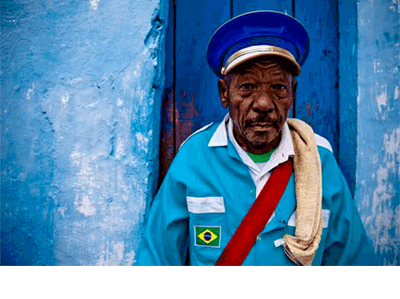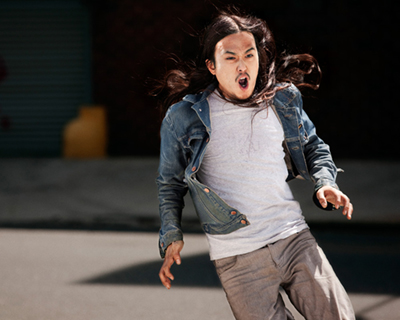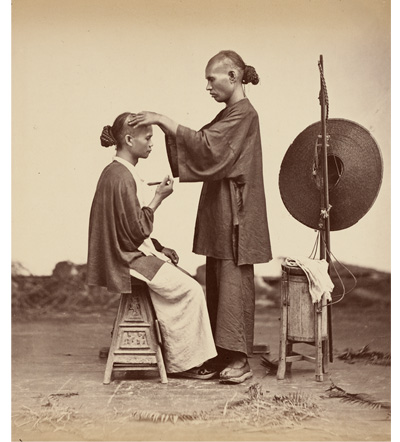
John Thomson Itinerant Barbers c. 1868-72

Photography came to China at the start of the 1860s, introduced by foreigners but enthusiastically embraced by natives. In the decades leading up to the twentieth century, every incarnation of the new technology managed to replicate itself in the Chinese popular consciousness: formal landscapes, official portraiture, personal documentation, and architectural and street scenes. These extraordinarily rare images are the meat of Sheying: Shades of China 1850-1900, opening September 15th at Throckmorton Fine Art.
The black-and-white photos, a mixture of work by transplanted Europeans and fledgling Chinese photographers, have the painterly shades and delicate composition of Europe’s ongoing pictorialism movement. But the pictures are unmistakably Chinese in subject matter. In a cramped Cantonese street, stall banners blot out the sky. Two prisoners pose stoically in cangues. There are countless images of harbors, filled with the bobbing handmade boats that powered the national economy. For all the influence the relatively established European photographers held, China proved itself to be an inimitable sitter. The collection provides a fascinating look at an empire before industrialization.
Click for Slideshow

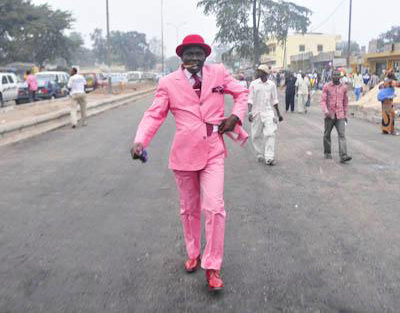
Courtesy Daniele Tamagni and Danziger Projects


In the troubled southern suburbs of Brazzaville, the Congo’s capital city, a resilient group of men have traded arms for Armani. The sapeurs, as captured in Daniele Tamagni & Africolor at Danziger Proejcts through September 10th, are Congolese men who abide by a strict moral code that’s signaled publicly by their equally rigorous dress rules. Tamagni, an Italian photographer working in several African regions, has produced photographs that reveal men in impeccably tailored, brilliantly colored three-piece suits, brandishing canes and cigars in the middle of slum neighborhoods. These men save up for months—often years—for an outfit.
Though the Sape movement first gained popularity as a way of resisting the 1970s national ban on western clothing, Tamagni no longer sees it as politically motivated. Today he sees it as both a form of “social affirmation,” and as an art in its own right. Not only is “dressing up a way to escape and forget poverty…but also their aesthetic is amazing, because they re-mix and re-interpret the Western brand outfits.” If fashion has truly become a life philosophy for the sapeurs, it’s clear that it’s a living, breathing dogma. “It’s a mix of dandyism with old colonial accessories and hip-hop style,” Tamagni explains. “It’s impossible to define their aesthetic.”
(more…)
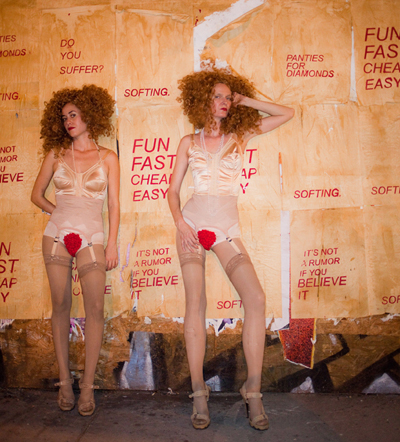
All images: Benjamin Heller
 Artist and Honey Space director Thomas Beale has been a friend of PLANET for several years. When he recently wrote to ask if I would consider covering an exhibit that was showing at his space, one that he felt was truly extraordinary, I was so struck by his compelling description of it that I suggested he write it himself. Conflict-of-interest concerns aside, I felt no one could write as intimately about how his gallery space had been transformed by this unique art piece and the various emotional dramas and resolutions that have unfolded there through it. – Derek Peck
Artist and Honey Space director Thomas Beale has been a friend of PLANET for several years. When he recently wrote to ask if I would consider covering an exhibit that was showing at his space, one that he felt was truly extraordinary, I was so struck by his compelling description of it that I suggested he write it himself. Conflict-of-interest concerns aside, I felt no one could write as intimately about how his gallery space had been transformed by this unique art piece and the various emotional dramas and resolutions that have unfolded there through it. – Derek Peck
I honestly didn’t know if it would work. I knew we could pull off the installation, and that the artists were prepared to step into their performance roles. Yet the question remained in my mind: would New Yorkers take 45 minutes out of their day to step into a private exhibition experience, with no more indication of what lay on the other side of a door than the vaguely suggestive title
Panties For Diamonds– A Psychodramatic Audition For Love In The Age Of Abandonment? And would enough people do this to keep the space active for five hours a day, five days a week?
(more…)
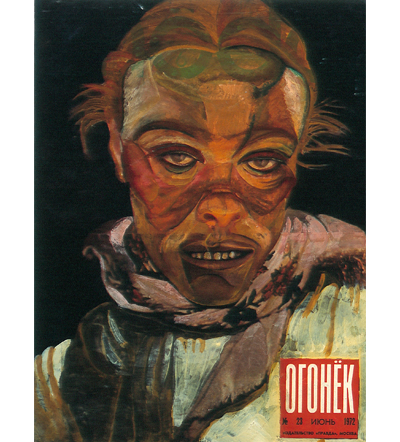
Sergey Zarva, Ogonyok, 2001. Courtesy the artist and Regina Gallery, Moscow/London

Fresh on the heels of civil unrest and hard-won liberation in places like Egypt, Libya, and the Ivory Coast, Ostalgia, a new show featuring more than 50 artists from 20 different countries across Eastern Europe and the former Soviet Republics is opening at the New Museum. The three-floor exhibit takes its name from the German ostalgie, a word that was on everyone’s tongue in the 1990s, nostalgic and morose for the golden era prior to the disintegration of the Communist Bloc. The show explores the full spectrum of emotional deviances that arose when the Soviet Union fell and Communism was permanently hobbled —a time before, during and after nations were forced to change their names, currency, constitutions and to a certain extent, their identities. Borders blurred, people felt the tumultuous aftershakes of their fallen ideologies and were forced to recommit themselves to a new history, a fresh place — despite the inexpressible trauma of losing one’s entire foundation.
(more…)
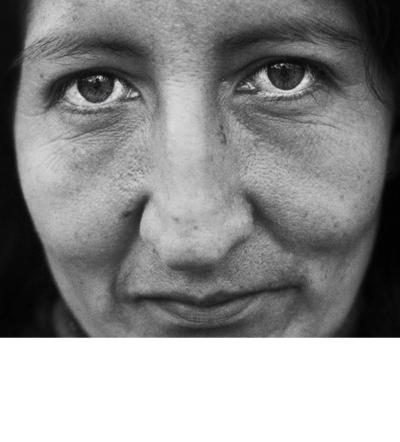

It can be hard, sometimes, to wrap our heads around the injustice faced by people overseas. We know that countries like Iran, Afghanistan and Burma are repressive places, but news stories about them can seem a little abstract and faraway. Without personal stories, we’re left with just a vague sense of what the injustice means.
That’s where an event like the Human Rights Watch Film Festival comes in. Now in its 22nd year, the festival (which takes place from June 16-30 in New York) shows how individuals are affected by repression and injustice. Powerful and personal, these films take us beyond the surface, looking into the lives of ordinary people with insight, sensitivity and humor.
You might get a chill, for example, when you watch the story of Naty, a Peruvian maid working in Spain to support her family–then realize that plenty of Natys have cleaned your room and brought you food. Mikael Wiström and Alberto Herskovits’ film Familia shows Naty’s intense loneliness and the price paid by her family in Peru, especially her young son. It’s a story that’s heartbreakingly familiar, yet intensely individual too.
(more…)
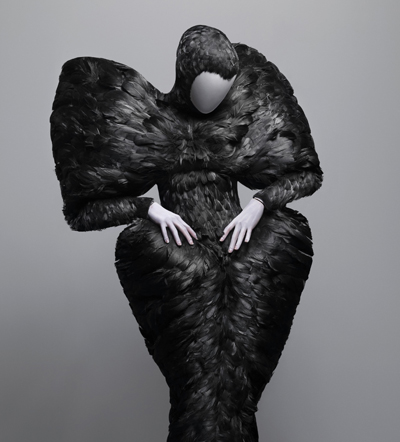
All Images Courtesy of the Metropolitan Museum of Art.

It is hard to talk of a genius to whose work you have always been attracted, and for a writer it is not easy to admit that for once, images speak louder than words. But when one comes in contact with the work of Alexander McQueen, whose untimely end last year devastated the fashion world, one has no choice but to put down the pen and just look.
The new exhibition of McQueen’s work opens tomorrow at the Metropolitan Museum of Art in New York. Curated by Andrew Bolton of the Costume Institute, this show is a comprehensive overview of McQueen’s
oeuvre. It is safe to say that this time the Met has outdone itself in its ambition to give a creator his due. The show is awe-inspiring in its tremendous scope and execution. Where it truly succeeds is in its ability to show how multifaceted McQueen’s talent was. His work combined historical and social commentary, cultural criticism, and romantic fantasy. The mind-blowing complexity of the garments speaks not only of McQueen’s skills, but also of his uncompromising nature. And while I am often hesitant to say that fashion is art, in McQueen’s case this seems like an apt comparison.
Click for slideshow
(more…)
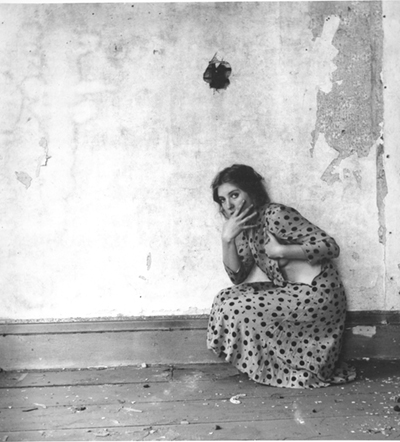
Click for slideshow From Polka Dots series 1976 Courtesy Betty & George Woodman

Photographer Diane Arbus once said that a photograph is “a secret about a secret. The more it tells you, the less you know.” Those words resonate powerfully in the work of Francesca Woodman, whose photographs from the 1970s and 80s are simultaneously mysterious, frank, playful, surreal, delicate and raw.
The daughter of two successful and accomplished artists, Woodman reached artistic maturity at an extremely young age. At thirteen, she was already making striking self-portraits; by the time she was seventeen, she was shooting haunting, intense images that were uniquely hers. Abandoned houses were her favorite place to work, but she also shot in forests and on beaches, where she placed female figures (often herself) communing with the environment in original, provocative ways. Sometimes, a surreal element creeps in: masks and mirrors hide faces, bodies are obscured by birch bark and peeling wallpaper. Woodman’s frank sexuality and daring enhances her perfectly-balanced compositions. Each image becomes its own little mystery.
Unfortunately, Woodman’s early work turned out to be her only work. In 1981, aged twenty-two and suffering from depression, she jumped to her death from a window in Greenwich Village. Like Diane Arbus, who also committed suicide, Woodman has become something of a mythic figure: the tortured girl genius whose talent couldn’t save her.
(more…)

(Click to enlarge) Burnt wood and lead on wood panels. 96 x 123 1/2 in. Photo: Bruce M. White.

With the recent rise in tensions along the disputed border between North and South Korea, as well as the ongoing debate over Israeli settlement building in the West Bank, the complexities of geopolitics have been front and center. So it’s as fitting a time as any to examine the work of artists concentrating on land and space, and the intersection of these elements with human lives. There is in fact an exhibition currently showing at the Princeton University Art Museum in Princeton, NJ that brings conflicts from across the globe off the front page and into the gallery, showcasing some of the most notable land art from the past decade in the process.
Each of the nine projects assembled for “Nobody’s Property” (open through February 20, 2011) highlights land issues in specific sites. Nature and natural resources are key to the exhibit, but the show isn’t precisely about art and ecology. Whereas past movements in art have treated nature as an entity of its own, curator Kelly Baum explains that “when the artists in this exhibition see land and space, they don’t see dirt and rocks as much as they see human beings and human relationships manifested in the way we use and abuse land.”
(more…)





 Facebook
Facebook Permalink
Permalink Digg
Digg Reddit
Reddit LinkedIn
LinkedIn StumbleUpon
StumbleUpon Tumblr
Tumblr







